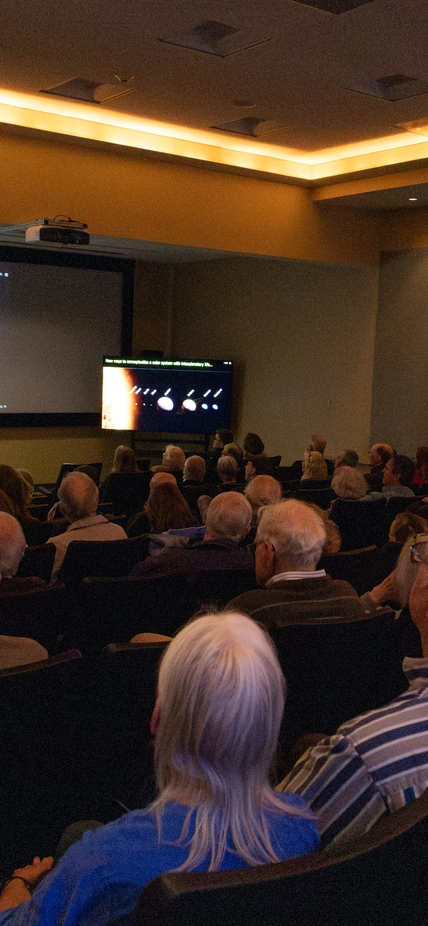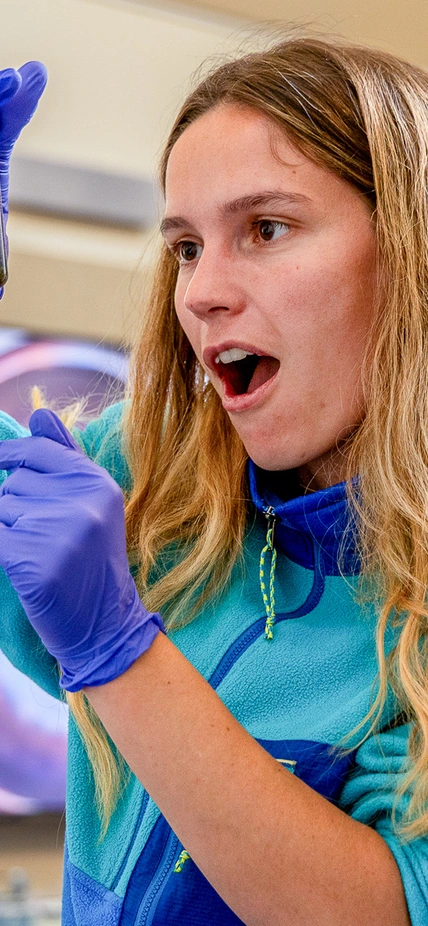Ever since life first sprang up from the primordial soup, it has found new ways to expand. But what happens when life begins to leave its home planet?
That was the question NASA astrobiologist Dr. Caleb Scharf explored at the Carnegie Science Earth and Planets Laboratory during his Neighborhood Lecture. His talk, The Giant Leap: Why Space Is the Next Frontier in the Evolution of Life, drew from his newly released book of the same name and examined what it means when an inhabited planet begins to expand across the cosmos.
Watch Recording:
1. Earth started expelling pieces of itself in 1957
"For 4.5 billion years, life on Earth stayed put. Then in 1957, the planet began expelling pieces of itself—on purpose"
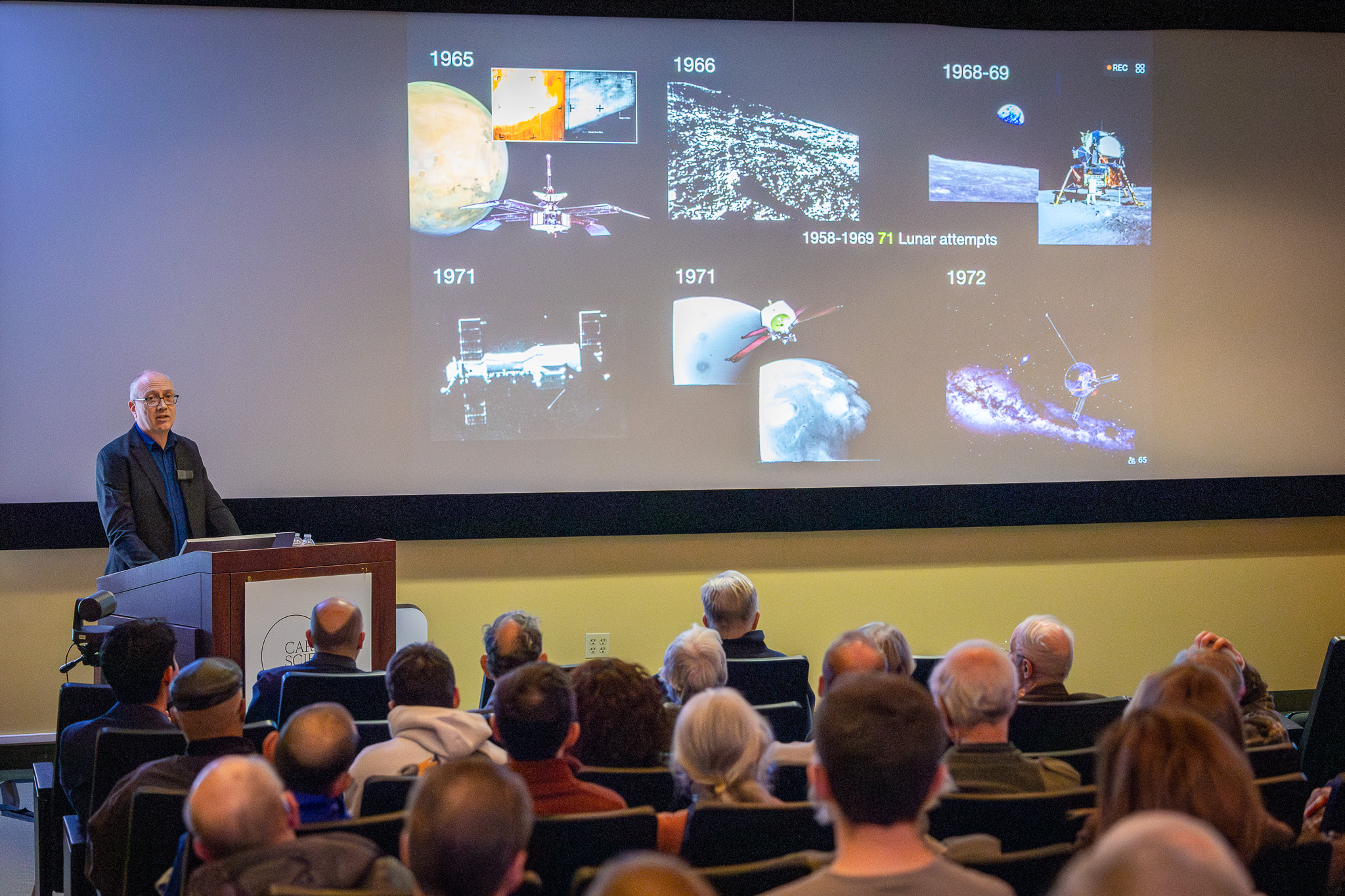
Scharf opened his talk with this striking idea: the dawn of the Space Age wasn’t just technological—it was biological. Sputnik’s launch marked the first time Earth deliberately sent pieces of itself into the cosmos.
“The planet went through all that effort to accrete itself out of interstellar matter,” he said. “And here it is now undoing that. It’s undoing itself.”
In just seven decades, that undoing has accelerated. Humanity has launched more than 45,000 objects into orbit and scattered machines across the Solar System—from the Moon and Mars to asteroids and beyond. For Scharf, this represents a profound new chapter in Earth’s natural history.
2. Space exploration is part of life’s evolution
"Evolution isn’t just about genes—it’s about the movement of matter and information through time."
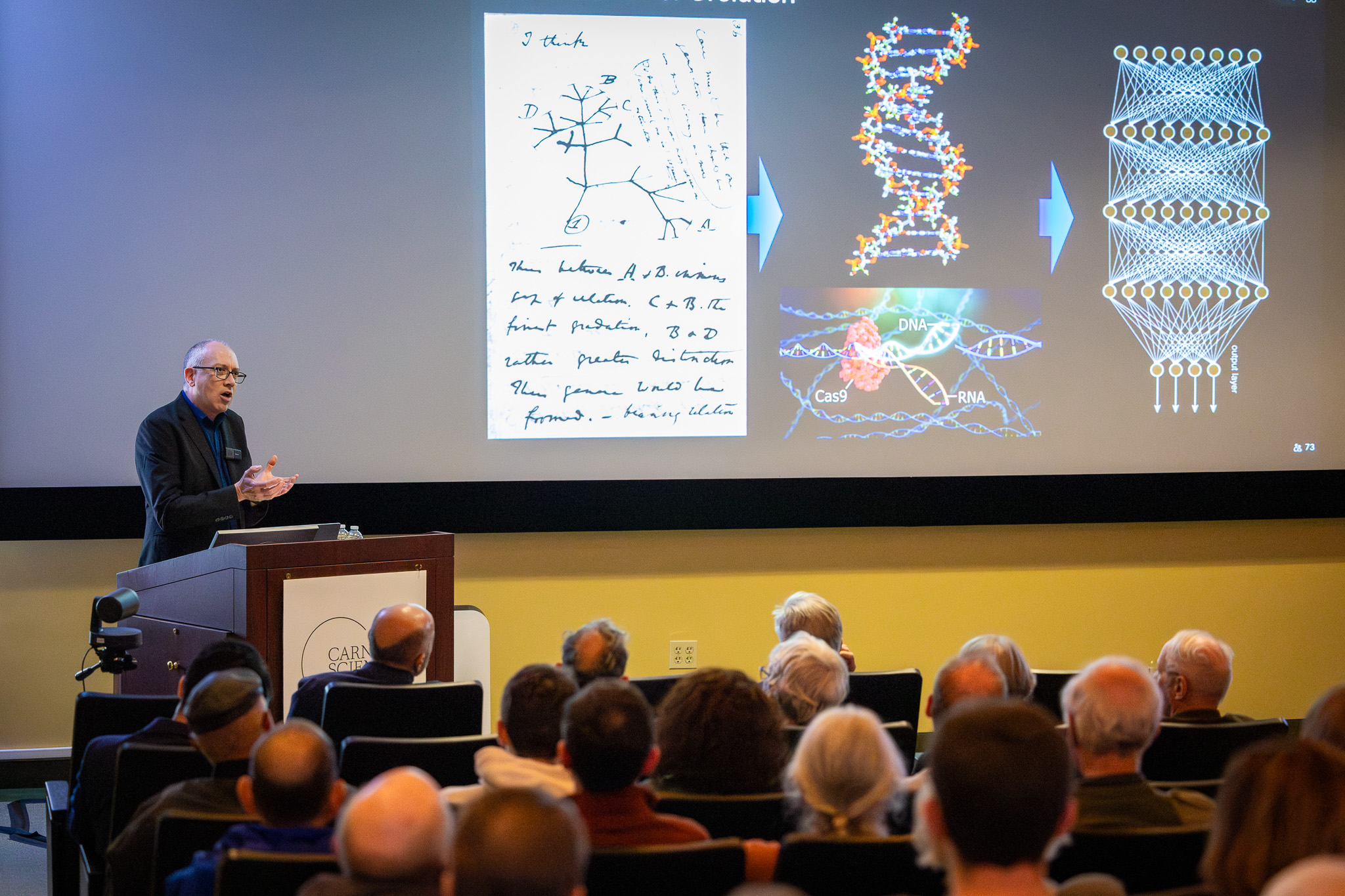
Scharf invited the audience to see space exploration as an extension of life’s core behavior: dispersal.
Every evolutionary leap—from the first organisms that left the oceans to the first birds that took flight—involved spreading into new environments. Rockets, satellites, and probes are simply the latest expression of that same impulse.
“It may seem perverse,” he admitted, “but this dispersal is what life does. It extends itself, it samples new possibilities. Space exploration is just the latest version of that.”
In this framing, our technologies aren’t separate from nature—they’re part of life’s way of continuing to evolve.
3. Darwin’s Beagle has a cosmic heir
"Darwin’s voyage evolved our understanding of life; ours might evolve life itself."

To make his point, Scharf drew a line from the 1830s voyage of the HMS Beagle to modern interplanetary missions.
He compared Darwin’s ship to the European Space Agency’s Beppi Colombo spacecraft, which is currently coasting toward Mercury using ion propulsion and finely tuned application of gravitational “currents” through the Solar System.
“When Darwin set sail, he was seeing the world from a new vantage,” Scharf said. “It gave him one of the first kinds of overview effect—the realization of how everything connects.”
So, where Darwin's trip through the Galapagos changed our understanding of life on Earth, modern space missions reveal its potential continuity across the Solar System.
4. Habitability is bigger than one planet
"For the first time in 4.5 billion years, stuff that exists on the Earth is now somewhat connected to stuff that exists elsewhere in our Solar System."

Astrobiologists usually define the “habitable zone” as the ring around a star where liquid water can exist. Scharf urged the audience to imagine something larger—a habitable system.
“Maybe the best way to sustain life for a long period of time is actually for it to be interplanetary,” he said. “For it to not remain stuck in its point of origin.”
Instead of one sweet spot, he described overlapping regions across the Solar System defined by radiation, energy, resources, and transport routes. In this view, moons, asteroids, and orbital habitats could all form parts of a connected ecosystem.
5. Space exploration is a chance to do better
"Space exploration isn’t about ignoring Earth’s problems—it’s about creating chances for us to do better."
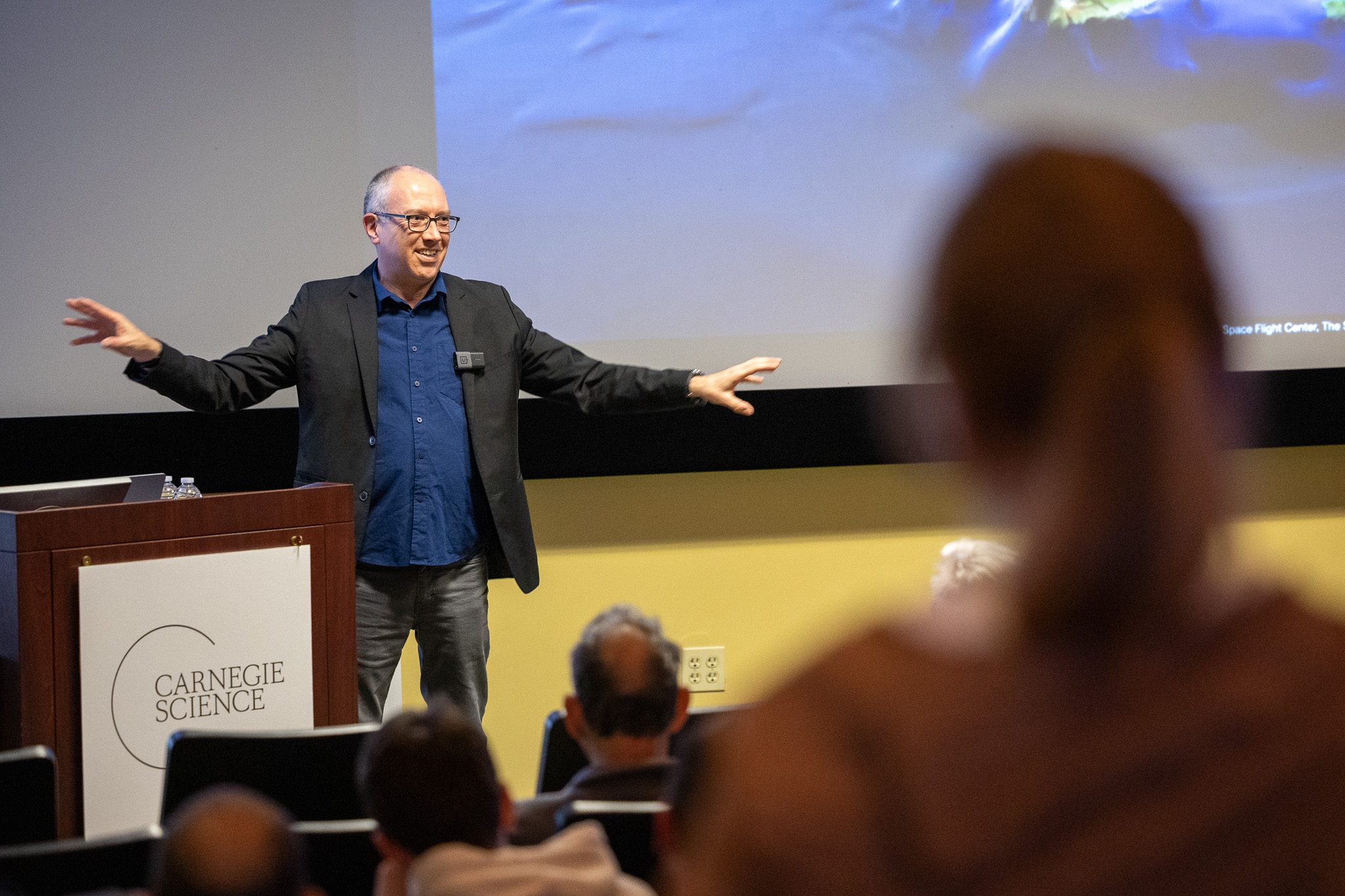
When asked whether human flaws—greed, competition, exploitation—might follow us beyond Earth, Scharf didn’t flinch.
“Almost certainly,” he said. “But part of what’s going on here is a transition in thought from resources of the Earth, which, while enormous, are nothing compared to these resources in the rest of the Solar System. There may come a point where that kind of squabbling becomes less relevant.”
He also noted that the challenges of space—its costs, dangers, and scarcity—could make us more disciplined.
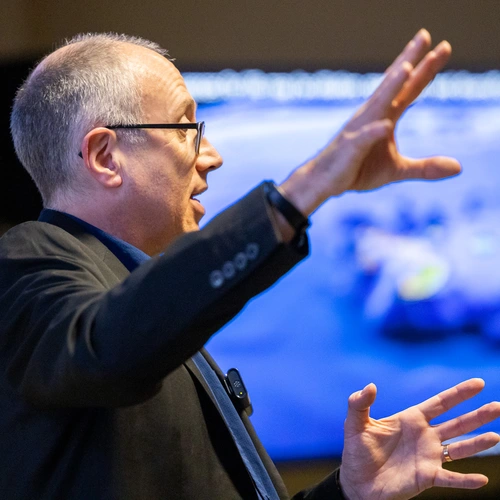
Meet Caleb Scharf
Caleb Scharf is an astrobiologist, author, and Senior Scientist at NASA’s Ames Research Center. His research and writing explore life’s origins and its potential beyond Earth, including in his latest book, The Giant Leap: Why Space Is the Next Frontier in the Evolution of Life.
Learn more